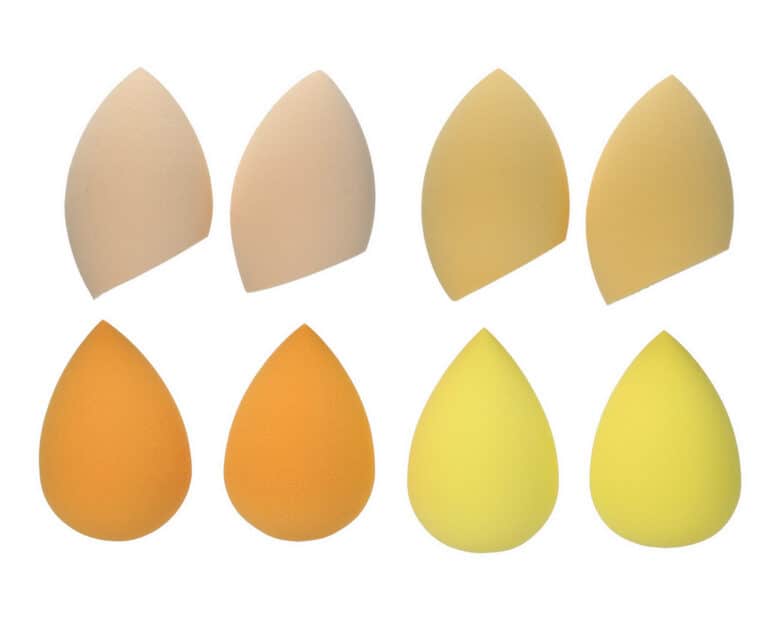Acid Staining Concrete Floors Do It Yourself (Tips for Good Results)
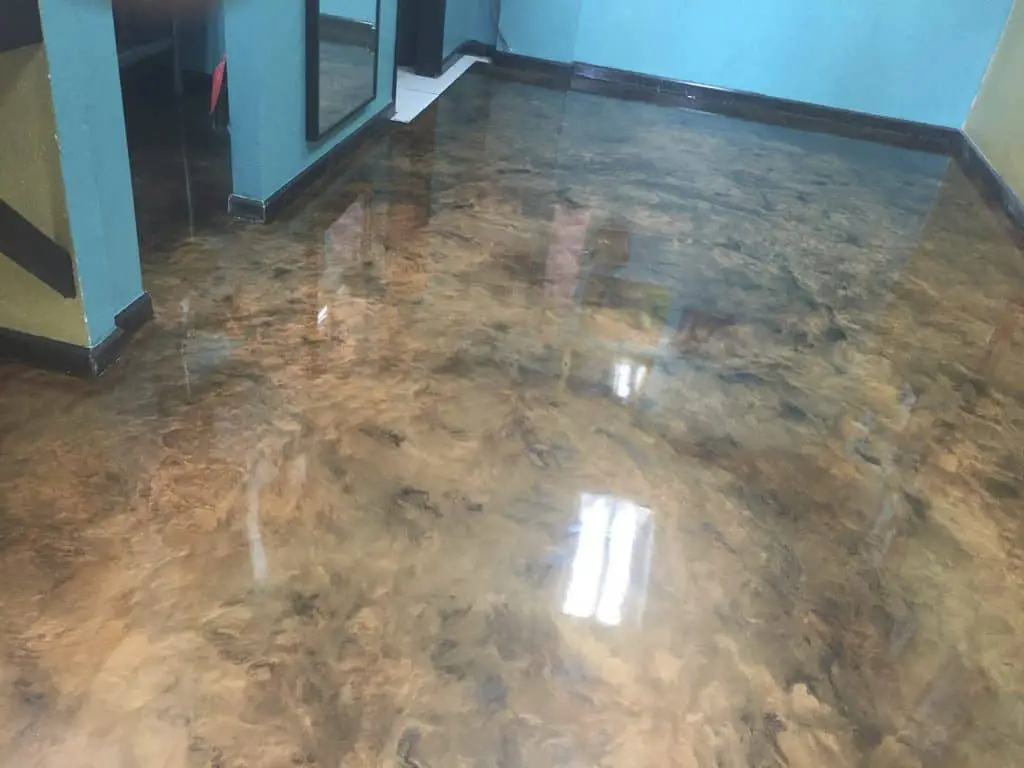
If you’re looking to add some character and personality to your concrete, acid staining is a popular option. Acid staining creates a unique, mottled look by penetrating the concrete surface and reacting with the minerals in the concrete.
Acid staining concrete floors is a popular way to add color and pattern to plain, boring concrete. This chemical reaction produces permanent color changes that will enhance the beauty of your concrete for years to come.
The process is simple and relatively inexpensive, but it does require some basic knowledge and preparation.
This article will provide everything you need to know about acid staining concrete floors, from neutralizing and rinsing the floor to maintaining the finish.
Is Acid Stain Good for Concrete?
The answer is yes—when it’s done properly. Because acid staining is an acidic process, it can etch or damage your concrete if it’s not applied correctly.
However, acid stains can also damage concrete. If not applied properly, they can etch the surface of the concrete or react with other chemicals in the concrete to create dangerous fumes. Acid stains should only be applied by experienced professionals.
That’s why it’s important to work with a professional who has experience acid staining concrete. But as DIY’ers, you can do it by following the steps in this article.
Acid Stain Color Selection Tips
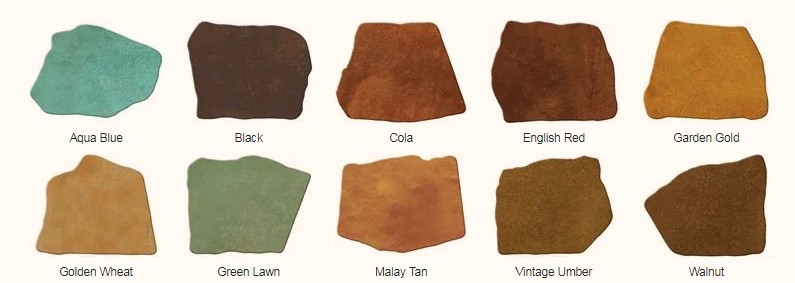
When it comes to acid staining color, there are a variety of colors to choose from. The most popular colors are brown, black, and gray. However, there are also a number of other colors available, such as blue, green, and red.
When choosing a color for your acid stained concrete project, it is important to consider the overall look you are trying to achieve. For example, if you want a natural look, you may want to choose a color that is similar to the existing color of your concrete. If you are looking for a more drastic change, you may want to choose a brighter color.
No matter what color you choose for your acid staining concrete project, the most important thing is to have fun and experiment until you find the perfect shade for your needs.
Here are some tips to get a beautiful color:
- Make a little test patch to ensure you like the color.
- Lighten the intensity of stains by diluting them.
- You can make your own shades by mixing stains.
- Creating unique effects requires layering numerous colors.
Acid Stain Size and Precautions
Before applying acid stain, read all product instructions and precautions on the label. The manufacturer has put the size label, the mixing instructions, and precautions for a reason — to help you get good results.
Acid based stain normally comes in one gallon containers. A gallon of undiluted stain typically covers 200-300 sq ft. Age, porosity, weather, surface texture, and overall composition of the concrete will affect the coverage rate. Older concrete with a rough surface requires more staining than new, smooth concrete.
How to Acid Stain Concrete Floors for DIY’ers
Step 1: The first step is diluting the stain.
Most brands of acid based stain recommend diluting to 1:1 acid/water. You can get just as much color with diluted stain, so applying acid stain full strength would just be a waste of time.
Step 2: Clean the Area
When the surface is completely dry, start cleaning the area floor. Scrape up any drywall mud and paint remaining on the floor. You may brush in any small areas with a nylon brush in a swift, circular motion.
You must clean the surface of any dust, debris, or oil. Otherwise, the acid stain won’t be able to penetrate the concrete.
Step 3: Etch the Concrete
Etching concrete is a simple but important part of the acid staining process. So what does this actually do?
It simply allows the stain to penetrate the surface by expanding the pores of the concrete. Without etching, your stain will not be able to penetrate the surface of the concrete and will not last as long.
There are two ways to etch concrete: with a chemical etcher and by sanding.
Step 4: Spray the Surface
Then use a plastic pump sprayer or large nylon brush to apply the stain over large areas, making sure not to leave any drips because they will be visible when it dries.
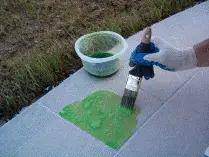
Spray in a circular motion, trying to evenly cover the surface. If using a brush, apply in a circular or figure eight motion, moving the brush swiftly and repetitively over the same area to avoid leaving brush marks.
Step 5. Spread Evenly
Since the acid begins reacting upon contact, the goal is to spread the stain as evenly and quickly as possible. You want to avoid having to overlap areas that have already dried.
Important: Applying acid stain is not like painting. You can’t cut the edges with a brush and then stain the rest. The more stain that’s applied, the darker the color usually gets.
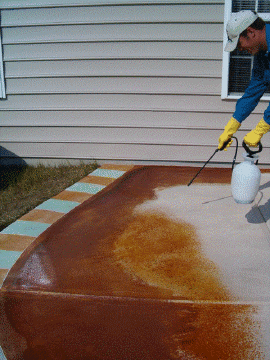
So if you cut the edges and then overlap, this overlapping is very visible and unsightly. If you do it yourself, the best way to avoid this is to tape off the edges and cover anything subject to overspray. Or you can have someone hold a piece of cardboard to stop overspray.
Step 6: Allow to Dry
Allow it to dry for at least 4 hours. If the first coat isn’t dark enough, you can apply a second coat and use a stiff-bristled brush to work the stain in. When all coats have been applied, allow the surface to dry overnight to give the stain maximum time for penetration.
Step 7: Neutralizing and Rinsing the Floor
It is important to neutralize and rinse the floor after acid staining to avoid damaging the concrete.
Neutralizing the floor after acid staining is important to prevent the acid from eating away at the concrete. There are a few different ways to neutralize the floor, but using a baking soda and water solution is one of the most effective methods.
After neutralizing the floor, it is important to rinse it with clean water to remove any residual chemicals.
Step 6: Sealing the Floor
Sealing acid stained concrete floors is an important step in protecting your acid stained concrete floors and keeping them looking great for years to come.
It is important to seal the floor to protect it from wear and tear. Sealing also makes the floor easier to clean. There are a few things to keep in mind when sealing acid stained concrete floors:
- Make sure the floor is clean and free of any debris before applying the sealer.
- Make sure the floor is completely dry before applying the sealer.
- Apply the sealer evenly and in thin coats.
- Allow the first application of sealer to dry and cure fully before adding a second coat. As a rule of thumb, you should wait at least 48 hours between coats.
- Follow the manufacturer’s recommendations for drying durations and re-coating intervals.
Acid Staining Concrete Floors Do It Yourself Tips
- Before applying acid stain, always do a test in an inconspicuous area to see how it will look. If you think it’s too dark, dilute the stain. If you get little or no color, you need to do more surface prep or consider a complete overlay.
- For a more inconsistent color or marbleizing, spray the surface with water and puddle it, then spray the stain.
- If you’re using more than one color and you’re afraid of the colors running together, you can apply sealer over finished areas before staining surrounding areas. Acid stains won’t penetrate through concrete sealers.
- Use plastic sprayers and brushes because acid based stains will react with metal objects and cause corrosion.
- Take the proper precautions, including rubber gloves, safety glasses, long pants and sleeves. You are working with a toxic and harmful product. Keep clean water close by in case of accidental splashes and spills. Always read the label for safety instructions.
- Protect any walls, plants, or any other areas from overspray.
- Apply when the temperature is between 50 and 90 degrees and the weather is dry. If it’s going to be a hot day, it’s better to stain in the morning. You don’t want it to dry too fast.
- If you plan to spray, pick a day that isn’t windy or else brush it on.
- When diluting acid based stain, ALWAYS POUR ACID INTO WATER, NEVER WATER INTO ACID!
- After the surface has dried, wash it thoroughly with a neutralizer. Baking soda and water work well for this. Mix 1/4lb of baking soda per 2 gallons of water and brush it around the entire surface. Then rinse completely and let dry. For interior floors, simply mop up the excess water or suck it up with a wet vacuum.
Acid Staining Concrete Floors Do It Yourself: Conclusions
Acid staining is a process used to enhance the appearance of concrete. As opposed to concrete that has been painted, acid stained floors have their surface chemically etched to create a mottled appearance. When done correctly, acid staining is a great way to add beauty and value to your home.
It’s important to choose the right sealer to get a good results. There are many different types of sealers on the market, so it’s important to do some research to find one that will work best for your floor.
Make sure you follow the manufacturer’s instructions carefully when applying the sealer. One of the important things is to make sure to allow plenty of time for the sealer to dry before walking on the floor or putting furniture back in place.

